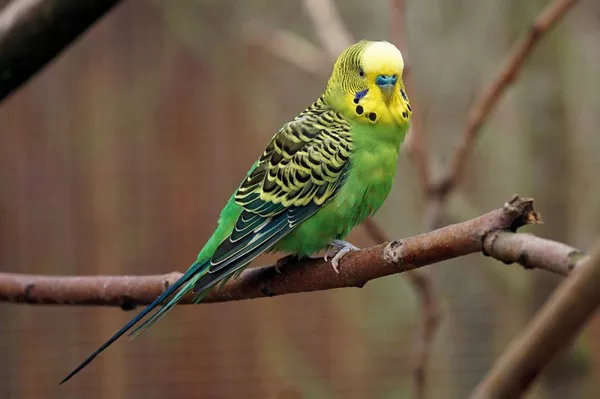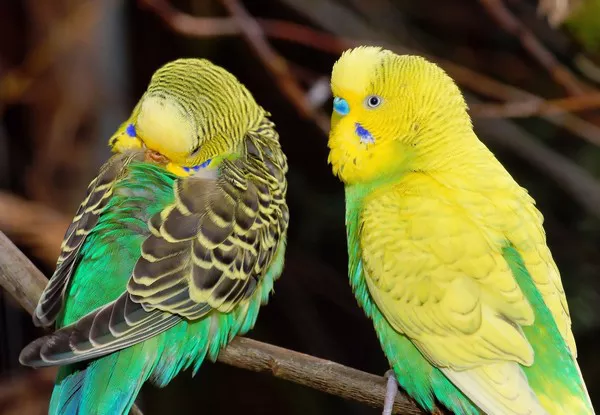Leopard tortoises (Stigmochelys pardalis) are fascinating creatures known for their striking, patterned shells and their slow, deliberate movements. Native to the savannas and grasslands of Southern and Eastern Africa, these tortoises are often kept as pets due to their unique appearance and relatively calm nature. However, if you’re considering adopting one, an important question that arises is: Can a leopard tortoise live indoors?
In this article, we will explore the living habits of leopard tortoises, their environmental needs, and whether or not it’s suitable for them to live indoors. We will also cover the benefits and challenges associated with keeping a leopard tortoise as an indoor pet.
Understanding the Leopard Tortoise
Before we delve into whether a leopard tortoise can live indoors, it’s important to understand its natural environment and what it needs to thrive. Leopard tortoises are among the largest tortoise species in Africa, with adult males reaching up to 18 inches in length and weighing up to 40 pounds, while females tend to be slightly smaller. Their shells are beautiful, typically featuring a yellow and black pattern, which is where they get their name from.
Leopard tortoises are herbivores, feeding on a diet that consists of grasses, leaves, flowers, and some fruits. They are also well-adapted to a warm, sunny climate. In the wild, they spend a lot of their time grazing and basking in the sun, but they also seek shelter during the hotter parts of the day and at night.
Natural Habitat and Behavior
Leopard tortoises are well-suited to their native environments, which include dry grasslands and semi-desert areas. These areas provide them with ample space to roam, graze on grasses, and find shelter. Tortoises are naturally solitary creatures and prefer to live alone or in small groups. Their primary activity consists of eating, grazing, and basking.
Being cold-blooded, leopard tortoises rely on external heat sources to regulate their body temperature. They are active during the day, especially in the morning and late afternoon when the sun is not at its peak intensity. Their behavior is often characterized by slow movement, although they can cover substantial distances in search of food and water.
Given their large size and active lifestyle, it’s crucial to provide a suitable environment for a leopard tortoise in captivity. This is where the question of whether they can live indoors becomes important.
Can Leopard Tortoises Live Indoors?
The short answer is that while leopard tortoises can live indoors, it is not always the best option for them. Indoor environments can be drastically different from their natural habitats, and providing the appropriate conditions for a leopard tortoise to thrive indoors can be challenging. However, with the right setup and proper care, it is possible to house a leopard tortoise indoors. Let’s look at the key considerations for keeping a leopard tortoise indoors.
1. Space Requirements
One of the biggest challenges of keeping a leopard tortoise indoors is providing enough space. In the wild, these tortoises can roam over large areas in search of food, and they need plenty of space to move around to stay healthy. A small enclosure or cage will not suffice for a leopard tortoise.
Indoors, you would need to create a large, secure enclosure that provides plenty of room for the tortoise to roam and graze. A single adult leopard tortoise needs at least 8 to 10 square feet of space. For hatchlings or juveniles, a smaller area may be acceptable, but it is still important to plan for their eventual size and growth.
Many tortoise owners use large, custom-built enclosures or specially designed tortoise tables that provide ample space for the tortoise to move. The enclosure should be escape-proof, as leopard tortoises are skilled at finding their way out of enclosures if they are not secure.
2. Lighting and UVB Exposure
Leopard tortoises, like all reptiles, rely on UVB light to synthesize vitamin D3, which is crucial for calcium absorption and overall health. In their natural environment, they bask in the sun for hours each day, and they need a similar setup indoors to thrive.
In an indoor setting, you must provide a UVB light source. This is typically achieved using fluorescent bulbs that emit UVB rays. Standard incandescent light bulbs do not provide UVB radiation, so a specific UVB lamp is necessary. The UVB bulb should be placed directly above the tortoise’s basking area, which should also be heated to create a thermal gradient.
Leopard tortoises require both UVA and UVB rays to help regulate their metabolism and promote a healthy shell. Without adequate exposure to UVB light, they can develop metabolic bone disease (MBD), a condition that leads to weak bones and shell deformities.
3. Temperature Control
Maintaining proper temperatures is critical for a leopard tortoise’s health. In the wild, they experience a hot, sunny climate, so replicating these conditions indoors is essential.
A leopard tortoise enclosure should have a temperature gradient, meaning that one area is warmer than the other. This allows the tortoise to choose its preferred temperature. The basking area should reach temperatures of about 90 to 95 degrees Fahrenheit (32 to 35 degrees Celsius), while the cooler side of the enclosure can be around 75 to 80 degrees Fahrenheit (24 to 27 degrees Celsius).
At night, temperatures can drop to around 65 to 75 degrees Fahrenheit (18 to 24 degrees Celsius), but they should never be exposed to temperatures below 60°F (15°C), as they are not cold-hardy.
To achieve these temperatures, you’ll need to use heating elements such as ceramic heat emitters or heat lamps. Be careful when choosing heating equipment, as some devices can become very hot and pose a fire risk. It is also essential to monitor the temperature regularly with a reliable thermometer to ensure the environment stays within the appropriate range.
4. Humidity Levels
Although leopard tortoises come from dry, arid environments, maintaining appropriate humidity levels is still important. Low humidity can lead to dehydration, respiratory issues, and shedding problems. On the other hand, excessively high humidity can promote fungal infections and shell rot.
For leopard tortoises, humidity levels should be kept between 40% and 60%. This can be controlled through proper ventilation in the enclosure and occasional misting. However, excessive misting should be avoided, as it can create overly damp conditions.
5. Diet and Water Supply
In the wild, leopard tortoises graze on a wide variety of grasses and plants. A balanced diet is essential for their health, and feeding them the right foods is just as important indoors as it would be outdoors.
Indoors, you can feed your leopard tortoise a variety of leafy greens, such as dandelion greens, collard greens, and mustard greens, along with occasional fruits like apples or berries. They should not be fed too many sugary fruits, as these can cause digestive problems. High-fiber, low-protein foods like hay should also be included in their diet.
Providing a constant supply of clean water is essential. While tortoises can survive without water for short periods, they need to drink regularly to stay hydrated. A shallow water dish should always be available in the enclosure, and the water should be changed daily.
6. Social Interaction and Enrichment
While leopard tortoises are solitary animals, they still benefit from enrichment and interaction. Although they do not require as much social stimulation as other pets like dogs or cats, they need opportunities for mental and physical stimulation.
In an indoor environment, it’s essential to provide your tortoise with opportunities to explore and engage in natural behaviors, such as grazing, climbing, and digging. You can enrich their environment by adding rocks, logs, or other objects that they can interact with. The addition of new textures, plants, and hiding spots can also help reduce stress.
7. Long-Term Care and Health Considerations
Leopard tortoises are long-lived animals, with some individuals reaching over 50 years of age. Keeping one indoors means you will be responsible for their care for a significant part of your life. It’s crucial to stay on top of regular health check-ups with a reptile veterinarian, particularly to monitor for signs of shell rot, respiratory infections, or nutritional imbalances.
The Pros and Cons of Keeping a Leopard Tortoise Indoors
While it is possible to keep a leopard tortoise indoors, there are both advantages and disadvantages to doing so.
Pros:
Protection from Predators: Indoors, your tortoise will be safe from wild animals and environmental threats.
Constant Access to Food and Water: You can ensure your tortoise has a constant supply of fresh food and water.
Control Over Environmental Conditions: You can control the temperature, humidity, and lighting, ensuring that your tortoise’s needs are met year-round.
Cons:
Space Limitations: It can be difficult to provide the vast amount of space that a leopard tortoise needs.
High Maintenance: Maintaining the proper temperature, humidity, and lighting can be time-consuming and expensive.
Risk of Health Issues: If environmental conditions are not carefully monitored, your tortoise may suffer from conditions like metabolic bone disease, shell rot, or respiratory infections.
Conclusion
In conclusion, while it is possible for a leopard tortoise to live indoors, it is a challenging commitment that requires a significant amount of effort and resources. Leopard tortoises have specific needs, including ample space, proper lighting and UVB exposure, temperature regulation, and a suitable diet. With the right setup and regular care, they can live comfortably indoors, but potential tortoise owners should be fully aware of the responsibilities involved.
If you are not able to provide a suitable indoor environment for your tortoise, it may be better to reconsider and either build an outdoor enclosure (if possible) or consider other pets that are better suited to indoor living. Ultimately, a leopard tortoise can live indoors, but its welfare depends entirely on the environment you create for it.
Related Topics:





















